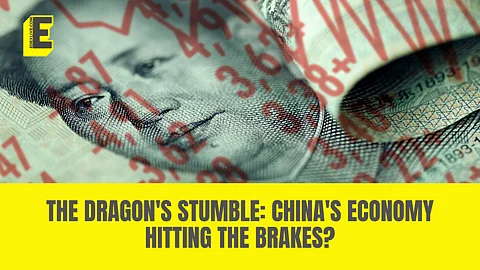

China's once-unstoppable economic engine is showing serious signs of strain, with analysts increasingly comparing the nation's trajectory to Japan's infamous economic stagnation that lasted from the 1990s through recent years.
The same factors that propelled China's remarkable four-decade growth story are now threatening to derail its economic momentum.
The numbers paint a concerning picture of China's economic health.
GDP growth collapsed to just 3 per cent in 2022, falling drastically short of the government's ambitious 5.5 per cent target.
Meanwhile, foreign investment confidence has evaporated, with net FDI flows declining by more than half from $344 billion in 2021 to $180 billion in 2022 – marking the weakest performance in five years.
Debt crisis: China encouraged massive borrowing across local governments, corporations, and households for infrastructure investment. This borrowing spree has left the country drowning in debt equivalent to 300 per cent of GDP – among the world's highest levels.
Real estate disaster: China's notorious "ghost cities" and "ghost factories" tell the story of massive overbuilding. An estimated 65 million homes across Chinese cities remain empty.
Political shift: President Xi Jinping has reversed China's market-friendly policies that previously supported private enterprise. His new economic approach emphasises common prosperity, green economy initiatives, and socialist values.
Population decline: China's 1.4 billion people no longer provide a demographic advantage. For the first time in six decades, the population actually declined in 2022, marking the end of a crucial growth driver.
These converging pressures suggest China may be entering its own version of Japan's "lost decades," where economic vitality gives way to prolonged stagnation.
The very pillars that supported China's rapid rise: political direction, population growth, and infrastructure investment have become the sources of its current vulnerabilities.
